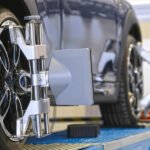

Understanding the Distinction: 4WD vs. AWD – Which is Right for You?
The debate between 4WD (four-wheel drive) and AWD (all-wheel drive) has been ongoing, with enthusiasts and everyday drivers alike weighing the pros and cons of each. While both systems aim to enhance traction and stability, they operate on distinct principles, each offering unique advantages.
Defining 4WD and AWD:
4WD (Four-Wheel Drive):
4WD is a drivetrain system that sends power to all four wheels simultaneously. Traditionally found in off-road vehicles and trucks, 4WD systems offer selectable modes, allowing drivers to engage or disengage the additional traction as needed. This setup is particularly effective in challenging terrains like mud, snow, or rocky paths, where maintaining traction on all wheels is crucial for safe navigation.
AWD (All-Wheel Drive):
AWD is a drivetrain system that continuously delivers power to all four wheels, distributing torque between the front and rear axles as necessary. Unlike 4WD, which typically requires manual engagement, AWD operates automatically, making it a popular choice for a wide range of vehicles, including sedans, SUVs, and crossover vehicles. AWD systems constantly monitor driving conditions and adjust power distribution to optimize traction and stability.
How They Work:
4WD Operation:
In a typical 4WD system, power is distributed evenly to all four wheels through a transfer case, which synchronizes the rotational speeds of the front and rear axles. Some advanced 4WD systems feature locking differentials that ensure equal torque distribution across all wheels, preventing slippage and maximizing traction in challenging conditions. However, 4WD is primarily designed for off-road performance and may not provide significant benefits on regular road surfaces.
AWD Operation:
AWD systems employ various configurations, including full-time AWD, part-time AWD, and on-demand AWD. Full-time AWD continuously supplies power to all wheels, while part-time AWD allows drivers to switch between two-wheel and all-wheel drive modes. On-demand AWD systems activate the rear wheels only when additional traction is needed, conserving fuel during normal driving conditions. AWD systems utilize sophisticated sensors and electronic controls to adjust power distribution in real-time, ensuring optimal grip and stability on diverse surfaces.
Fundamental Differences:
- Engagement: 4WD systems typically require manual engagement, allowing drivers to choose when to activate additional traction. In contrast, AWD operates automatically, seamlessly adjusting power distribution based on driving conditions without driver intervention.
- Terrain Versatility: While both systems enhance traction, 4WD is often preferred for off-road adventures and rugged terrains due to its ability to lock differentials and distribute equal torque to all wheels. AWD, on the other hand, excels in providing enhanced stability and traction on paved roads and varying weather conditions.
- Complexity and Weight: 4WD systems tend to be bulkier and heavier due to additional components such as transfer cases and locking differentials. AWD systems are generally lighter and more compact, contributing to improved fuel efficiency and handling characteristics.
Advantages of Each:
Advantages of 4WD:
- Superior performance in off-road environments, including mud, sand, and rocky terrain.
- Enhanced towing capability and payload capacity, making it ideal for hauling heavy loads.
- Ability to manually engage and disengage 4WD mode, preserving fuel efficiency during normal driving conditions.
Advantages of AWD:
- Seamless operation without the need for driver input, providing enhanced traction and stability in diverse driving conditions.
- Improved handling and cornering stability on paved roads, contributing to a smoother and more controlled driving experience.
- Enhanced safety features, including electronic stability control and traction management systems, bolstering driver confidence in challenging weather conditions.
In conclusion, the choice between 4WD and AWD ultimately depends on your driving preferences, intended usage, and environmental conditions. Whether you prioritize off-road capabilities or year-round traction and stability, understanding the fundamental disparities between these drivetrain systems will empower you to select the ideal option for your automotive needs.
Add a comment Cancel reply
Categories
- Car Gadgets (17)
- Car News (33)
- Car Reviews (43)
- Car Wars (7)
- Mechanicals (32)
- Uncategorized (2)
Recent Posts
About us

Popular Tags
Related posts


Essential Car Repair Skills Every Driver Should Know

All About Wheel Balancing








